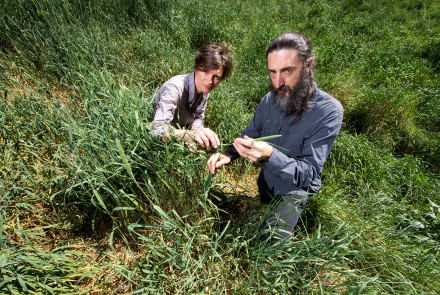Farmers should pay for invasive weeds – researchers

Farmers who use plant varieties that become invasive weeds should pay a levy to cover any environmental management costs under a plan put forward by researchers at The Australian National University (ANU).
The levy is one recommendation in a new paper which aims to combat the global problem of invasive plants caused by agribusiness.
“It’s a polluter pays principle. If their pastures become invasive, then agribusiness and farmers should be responsible for paying for any control or eradication,” said lead researcher Associate Professor Don Driscoll, from the ANU Fenner School of Environment and Society.
Co-researcher Dr Jane Catford said around 90 per cent of invasive weeds in Australia have been brought in deliberately and now cost around $4 billion per year to manage.
“If you took environmental costs into account it would be around double that figure,” she said.
Associate Professor Driscoll said agribusinesses bred new pasture plants to increase productivity, grow faster, produce more seeds and tolerate environmental extremes.
“The problem is that in making these pasture varieties more robust, they are more prone to becoming a problem for the environment,” he said.
“New varieties can invade adjacent areas and spread across the landscape, or they can interbreed with existing invasive weeds.”
The researchers have made four recommendations for government, industry and researchers aimed at increasing bio-security.
They said governments should manage a list of prohibited varieties, not just species, develop a weed risk assessment, ensure rapid detection and control of invasive weeds, and develop an industry-pays system.
“Agribusiness and pastoralists have left Australia with a terrible weed legacy. Australians will be paying to manage that legacy for generations,” Associate Professor Driscoll said.
“A polluter-pays scheme would make agribusinesses accountable for any damage their products cause, and would dampen their enthusiasm for releasing super-weeds into Australian landscapes.”
The paper has been published in the latest edition of PNAS. Associate Professor Driscoll has created a video explaining the plan seen below.
 Follow
Follow